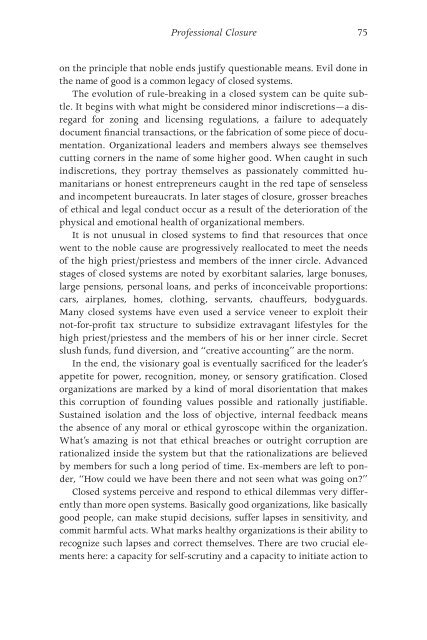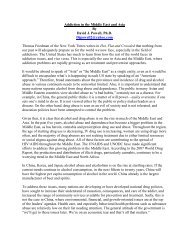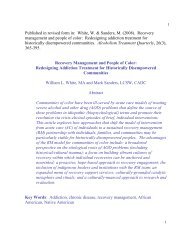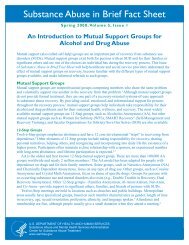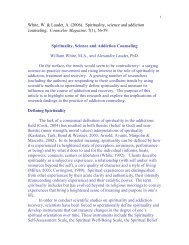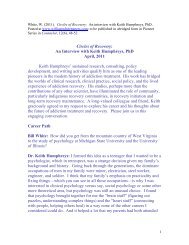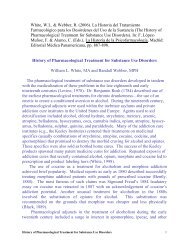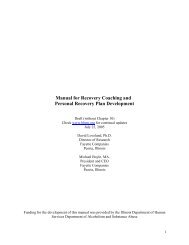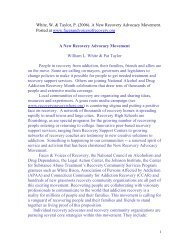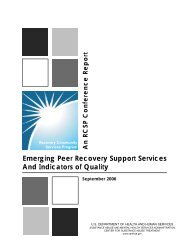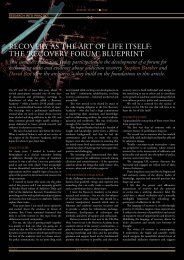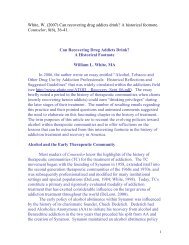Incest 0000i-xiv FM 1 - William L. White
Incest 0000i-xiv FM 1 - William L. White
Incest 0000i-xiv FM 1 - William L. White
Create successful ePaper yourself
Turn your PDF publications into a flip-book with our unique Google optimized e-Paper software.
Professional Closure 75<br />
on the principle that noble ends justify questionable means. Evil done in<br />
the name of good is a common legacy of closed systems.<br />
The evolution of rule-breaking in a closed system can be quite subtle.<br />
It begins with what might be considered minor indiscretions—a disregard<br />
for zoning and licensing regulations, a failure to adequately<br />
document financial transactions, or the fabrication of some piece of documentation.<br />
Organizational leaders and members always see themselves<br />
cutting corners in the name of some higher good. When caught in such<br />
indiscretions, they portray themselves as passionately committed humanitarians<br />
or honest entrepreneurs caught in the red tape of senseless<br />
and incompetent bureaucrats. In later stages of closure, grosser breaches<br />
of ethical and legal conduct occur as a result of the deterioration of the<br />
physical and emotional health of organizational members.<br />
It is not unusual in closed systems to find that resources that once<br />
went to the noble cause are progressively reallocated to meet the needs<br />
of the high priest/priestess and members of the inner circle. Advanced<br />
stages of closed systems are noted by exorbitant salaries, large bonuses,<br />
large pensions, personal loans, and perks of inconceivable proportions:<br />
cars, airplanes, homes, clothing, servants, chauffeurs, bodyguards.<br />
Many closed systems have even used a service veneer to exploit their<br />
not-for-profit tax structure to subsidize extravagant lifestyles for the<br />
high priest/priestess and the members of his or her inner circle. Secret<br />
slush funds, fund diversion, and “creative accounting” are the norm.<br />
In the end, the visionary goal is eventually sacrificed for the leader’s<br />
appetite for power, recognition, money, or sensory gratification. Closed<br />
organizations are marked by a kind of moral disorientation that makes<br />
this corruption of founding values possible and rationally justifiable.<br />
Sustained isolation and the loss of objective, internal feedback means<br />
the absence of any moral or ethical gyroscope within the organization.<br />
What’s amazing is not that ethical breaches or outright corruption are<br />
rationalized inside the system but that the rationalizations are believed<br />
by members for such a long period of time. Ex-members are left to ponder,<br />
“How could we have been there and not seen what was going on?”<br />
Closed systems perceive and respond to ethical dilemmas very differently<br />
than more open systems. Basically good organizations, like basically<br />
good people, can make stupid decisions, suffer lapses in sensitivity, and<br />
commit harmful acts. What marks healthy organizations is their ability to<br />
recognize such lapses and correct themselves. There are two crucial elements<br />
here: a capacity for self-scrutiny and a capacity to initiate action to


